Decalab invites me to present a conference/performance on the antiAtlas of borders at the Lab of the cultural institute of Google in Paris.
I end the art and science performative conference after the talk of Roger Malina, astrophysician and founder of the Texas University of Dallas ArtSciLab and Andrew Blanton, artist composer, Tommaso Venturini, from the MediaLab of Sciences Po.
I play with all the interactive, online and video content of the antiatlas of borders exhibition, on and offline, showing interactive cartography, maps and projects related to the mutations of the borders on the 21st century.
« Data Dramatization » Art, Science, Design & Data visualization September 12th 2014 Lab at the Cultural Institute – a programm by Decalab
Certain artists and designers define themselves today as researchers in art or design . They produce cutting-edge technology and innovative systems that question new practices — developing new models of Human-Machine Interfaces (HMI), challenging paradigms, producing new relationships between users and technologies, and creating knowledges. This work fuels methods of innovation and exploration in fields as diverse as ergonomics, experimental psychology, but also research in IT, the social sciences, and experimental sciences such as biology, mathematics, physics, and so on.
In this context, artistic practices should echo the scientific experimentation of their era: like scientists, artists conduct research, experiment, formulate new hypotheses, and call the established interpretative frameworks into question. In their own domain, each of these researchers continually questions reality, reformulating it while producing new perspectives, and thus creating a new status of reality, a new objectivity. These studies are different in status but similar in their objectives: to explore and experiment with new ways of imagining the world that then lead to the design of new services, new relational systems, and new models. Yet cooperation between art, design, engineering, and science is not new: from the 1950s onwards, artists started using the technology produced at MIT for their own ends; in the 1980s, Xerox Park integrated artistic practices into their process of innovation; Ars Electronica Center in Austria was created from the 1990s and is still active, etc.
This history is intensifying today with the diversification of cooperative models. New structures developing hybrid practices are being created all over the world. This is the case of ArtSiLab at Texas University for example: “The UT Dallas ATEC & EMAC Art-Science Lab carries out research and development that requires collaboration between artists and scientists, applied to problems of societal urgency and cultural timeliness. Through our projects, we seek to develop multiple applications, in a studio-lab approach, including the creation of artworks, scientific research, technology development and educational innovation. We carry out our projects through trans-disciplinary, national and international partnerships and collaborations.” Within this framework, the scientist Dr Roger Malina thus collaborated very closely with Andrew Blanton, media artist and composer.
This was also the case of Media Lab de Science Po Paris, founded by philosopher Bruno Latour, which collaborated with designers in its research. Tommaso Venturini, a social sciences researcher, will evoke this during his presentation.
This hybrid ecosystem signals the emergence of other stakeholders’ involvement in such research activities. This is the case of DécaLab, an agency dedicated to innovation through explorative design and art, designed for businesses. It is also the case of the art critics, theorists, and curators who, like Isabelle Arvers , contribute to exploring new concepts and perceptions and thus enrich scientific and artistic debates. Artists, scientists, designers, researchers, and critics thus explore together new ways of thinking about a theme or problematic. The theme of this conference is Data , a key issue in our contemporary societies . An extremely complex subject, Data is “dramatised” here, meaning that is used, applied, reappropriated, and staged, in order to understand it in a more intuitive way. Various channels will be presented for you to explore, in the form of performances associating speech, sound, maps, and images.
This performative, playful, and thought-provoking time will once again encourage the emergence of innovative stakeholders: you ! The great strength of this hybrid research is effectively to empower spectators and listeners. Whether they are experts or not, they are “swept up” in the research dynamic. A new public space emerges that is favourable to discovery and debate, in order to rethink transformations in new ways that depart from hegemonic discourses.

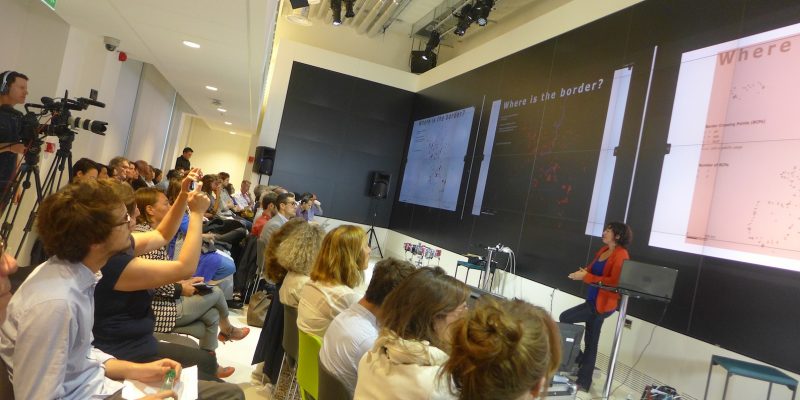
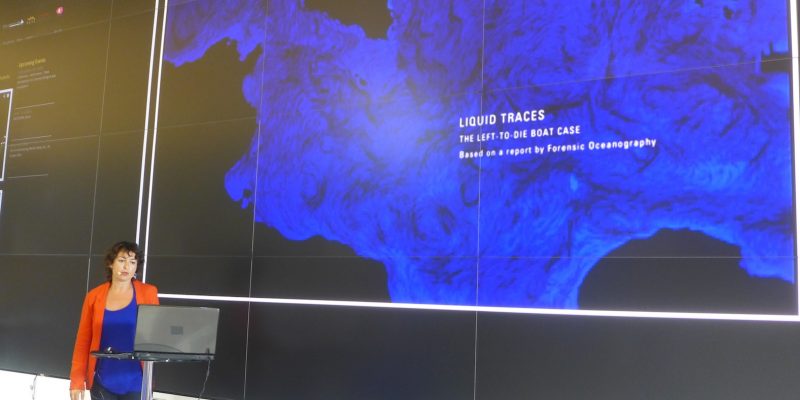
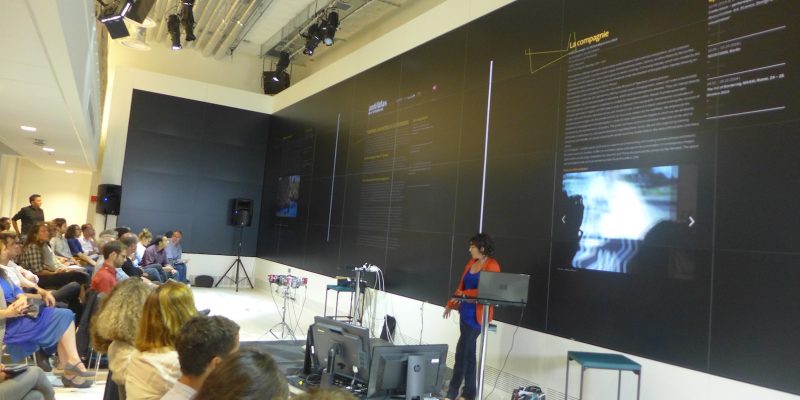
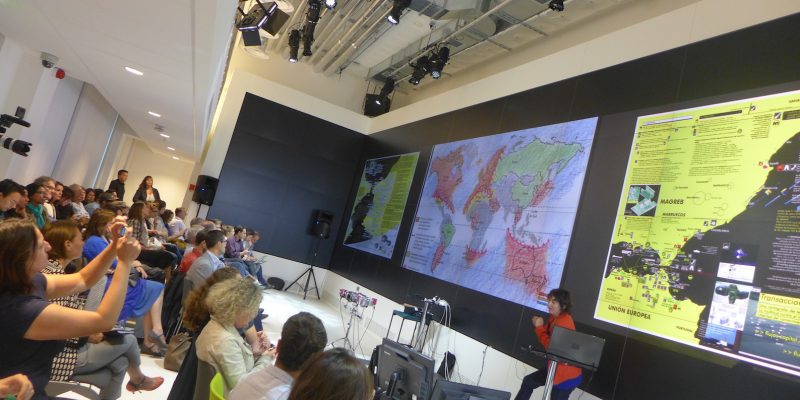
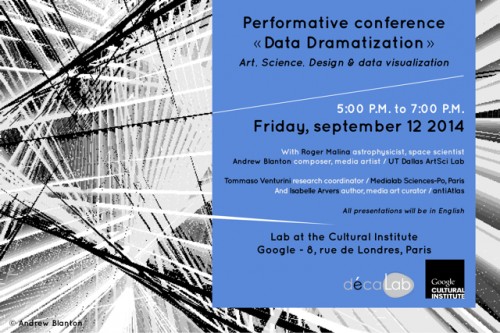
Leave a Reply
You must be logged in to post a comment.